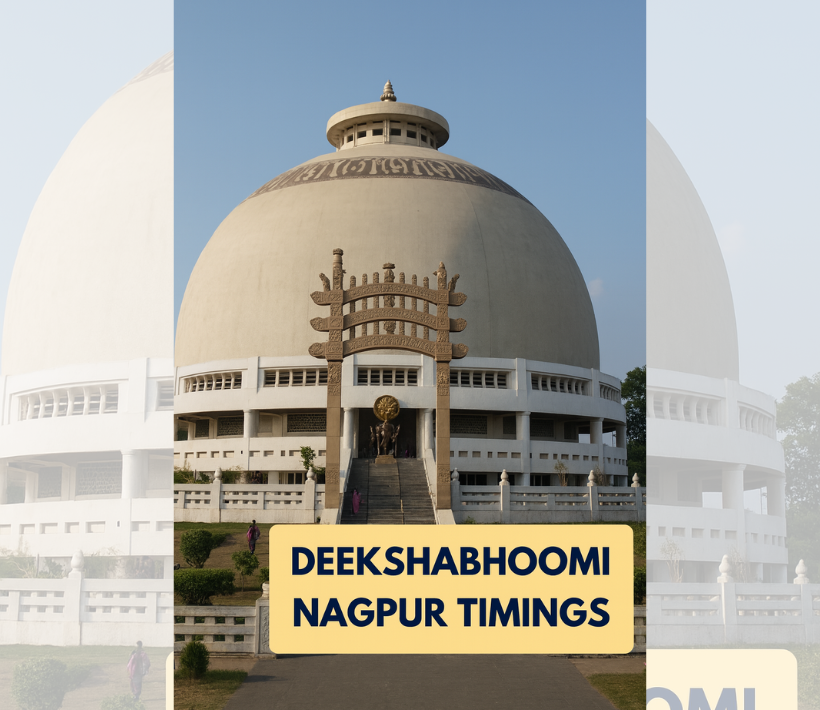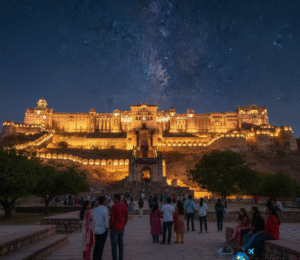Who Built the Stunning History of Dilwara Temples Mount Abu?
The history of Dilwara temples Mount Abu represents one of India’s most remarkable architectural achievements. Nestled in the Aravalli Range of Rajasthan, these five Jain temples showcase intricate marble carvings that leave you speechless. You’ll discover that these sacred structures weren’t built by kings or emperors, but by wealthy merchants and ministers who dedicated their fortunes to creating something eternal.
When you explore the history of Dilwara temples Mount Abu, you’re stepping into a world where artisans spent decades perfecting every detail. Each temple tells a different story, spanning from the 11th to the 13th centuries. These aren’t just religious buildings—they’re masterpieces that changed how people viewed marble architecture forever.
The Origins: Who Built the Dilwara Temples?
Vimal Vasahi Temple – The First Marvel
The oldest structure in the history of Dilwara temples Mount Abu began with Vimal Shah, a minister serving the Solanki king of Gujarat. In 1031 CE, Vimal Shah commissioned the first temple, now called Vimal Vasahi, dedicated to the first Jain Tirthankara, Adinatha. You might wonder why a minister would undertake such an expensive project. Historical records suggest he wanted to create something that would honor his faith while showcasing the wealth and power of the Solanki dynasty.
The construction took 14 years and required 1,500 artisans working continuously. Vimal Shah personally supervised the project, ensuring every carving met his exacting standards. The temple used white marble transported from quarries hundreds of miles away, a logistical feat that demonstrated incredible planning and resources.

Luna Vasahi Temple – The Second Masterpiece
Fast forward to 1230 CE, and you’ll find two brothers, Vastupala and Tejapala, creating the second major temple. The Luna Vasahi temple honors the 22nd Tirthankara, Neminatha. These brothers served as ministers in the Vaghela dynasty and wanted to match—or exceed—Vimal Shah’s achievement. They succeeded spectacularly, creating what many consider the most intricately carved temple in the complex.
The Luna Vasahi temple took craftsmen nearly two decades to complete. Vastupala and Tejapala didn’t just fund the construction—they brought in the finest marble sculptors from across western India. The result? A temple where you can see through marble screens carved so thin they’re almost translucent.
The Other Three Temples
The history of Dilwara temples Mount Abu includes three additional temples built between these two masterpieces and after. The Pittalhar Temple, built around 1316 CE, features a massive brass idol of Adinatha. The Parshvanatha Temple and Mahavir Swami Temple, though smaller, add to the complex’s spiritual significance. These three temples show how the architectural tradition evolved over three centuries.
The History of Dilwara Temples Mount Abu: A Timeline
Understanding the chronological development helps you appreciate how the history of Dilwara temples Mount Abu unfolded across centuries:
| Year | Temple Name | Builder | Dedicated To | Key Feature |
|---|---|---|---|---|
| 1031 CE | Vimal Vasahi | Vimal Shah | Adinatha (1st Tirthankara) | Oldest temple, 48 carved pillars |
| 1230 CE | Luna Vasahi | Vastupala & Tejapala | Neminatha (22nd Tirthankara) | Most intricate carvings, translucent marble |
| 1316 CE | Pittalhar | Bhima Shah | Adinatha | Brass idol weighing 108 kg |
| 13th Century | Parshvanatha | Unknown | Parshvanatha (23rd Tirthankara) | Smallest temple, simple design |
| 13th Century | Mahavir Swami | Unknown | Mahavira (24th Tirthankara) | Latest addition to complex |
Architectural Brilliance That Defined an Era
Marble Craftsmanship Beyond Compare
The history of Dilwara temples Mount Abu showcases marble work that remains unmatched even today. You’ll notice that artisans carved entire ceilings from single marble blocks, creating patterns so complex they resemble lace. The famous lotus ceiling in Luna Vasahi contains 11 concentric circles with different designs, all carved from one piece of marble. Experts estimate each square inch took weeks to complete.
What makes this achievement remarkable? The artisans worked without modern tools, using only chisels, hammers, and incredible patience. They carved downward, meaning any mistake would ruin months of work. This technique created shadows and depth that make the carvings appear three-dimensional.
The Intricate Ceiling Designs
Every ceiling in the temple complex tells a visual story. The Vimal Vasahi temple features a rangamandapa (dancing hall) with 48 pillars, each carved with different dancing figures and celestial beings. You can spend hours examining these pillars and never see the same design twice. The craftsmen signed their work by hiding tiny figures of themselves in the carvings—a practice that shows their pride in their artistry.
The Luna Vasahi temple’s ceiling contains over 500 carved marble slabs, each depicting scenes from Jain mythology. The central dome features 16 vidyadevis (goddesses of knowledge) riding different animals, surrounded by floral patterns that seem to float in space.
Why the Dilwara Temples Were Built
Religious devotion drove the history of Dilwara temples Mount Abu, but other factors played important roles. Jainism emphasizes ahimsa (non-violence) and aparigraha (non-possessiveness), yet wealthy merchants and ministers accumulated significant fortunes. Building temples allowed them to use their wealth for spiritual merit while demonstrating their power and taste.
Mount Abu provided the perfect location for several reasons:
- Strategic positioning on a major trade route connecting Gujarat to northern India
- Cool climate suitable for year-round construction work and pilgrimages
- Natural protection provided by mountain terrain
- Spiritual significance as a sacred Jain pilgrimage site
The builders also wanted to create something permanent. Unlike wood or stone, marble doesn’t weather quickly, ensuring their legacy would survive centuries. This desire for immortality through architecture shaped every decision in the construction process.

The Builders: Vimal Shah and Vastupala-Tejapala
Vimal Shah served as a minister under Bhima I of the Chalukya dynasty. Historical texts describe him as extremely wealthy but also deeply religious. He reportedly spent 185.3 million rupees (in today’s value) constructing the Vimal Vasahi temple. You might think this excessive, but Jain philosophy encourages using wealth for religious purposes rather than personal luxury.
Vastupala and Tejapala came from a merchant family that rose to political prominence. These brothers served as ministers under three successive Vaghela kings. They built temples, stepwells, and rest houses throughout western India, but the Luna Vasahi temple remained their crowning achievement. Ancient inscriptions credit Tejapala’s wife, Anupamadevi, with inspiring the project and overseeing many design decisions.
Both sets of builders shared common traits:
- Deep religious faith that motivated massive investments
- Political power that provided resources and labor
- Artistic vision that elevated temples beyond mere religious structures
- Legacy consciousness that drove them to create enduring monuments
Historical Challenges and Preservation
The history of Dilwara temples Mount Abu includes periods of threat and survival. Muslim invasions in the 13th and 14th centuries destroyed many Jain temples across India, but Dilwara survived partly due to its remote location. Local legends suggest that attackers who reached Mount Abu were so impressed by the marble work that they chose to preserve rather than destroy the temples.
British colonial authorities documented the temples extensively in the 19th century. [Insert Internal Link: “British Documentation of Indian Heritage Sites”] Officers like James Tod wrote detailed descriptions that helped preserve knowledge about the temples’ history. The Archaeological Survey of India took over protection in 1950, implementing conservation measures that continue today.
Modern preservation faces different challenges:
- Air pollution causing marble discoloration
- Tourist traffic creating wear on floors and carvings
- Natural weathering despite marble’s durability
- Unauthorized photography potentially damaging light-sensitive areas
The Jain community maintains strict protocols for temple care. You’ll notice that visitors must remove shoes and leather items before entering, protecting both the sanctity and the physical structure.
What Makes the History of Dilwara Temples Mount Abu Unique?
Several factors distinguish these temples from other Indian architectural wonders. First, the complete marble construction sets them apart—most temples use marble decoratively rather than structurally. The builders transported millions of tons of marble up steep mountain paths, a logistical achievement that staggers modern engineers.
Second, the artistic continuity across two centuries shows how knowledge transferred between generations of craftsmen. You can trace stylistic evolution from Vimal Vasahi’s relatively simpler designs to Luna Vasahi’s breathtaking complexity. This progression demonstrates how artisans built on previous achievements while adding innovations.
Third, the merchant patronage model proved that religious architecture didn’t require royal sponsorship. This democratization of temple building influenced Indian architectural history, encouraging wealthy non-royals to fund public projects. The history of Dilwara temples Mount Abu inspired similar projects across western India.
Finally, the temples demonstrate mathematical precision in their proportions and symmetry. Modern architects studying the structures find that the builders used sophisticated geometric principles, creating harmonious spaces that feel naturally balanced.
Visiting the Dilwara Temples Today
When you plan your visit to experience the history of Dilwara temples Mount Abu, understanding the protocols helps you appreciate the experience. The temples open twice daily: 6:00 AM to 12:00 PM and 3:00 PM to 6:00 PM. Photography isn’t permitted inside, forcing you to truly observe rather than simply document.
The temple complex sits about 2.5 kilometers from Mount Abu town center. You can reach it by taxi, auto-rickshaw, or even walk if you’re comfortable with uphill terrain. Entrance is free, but donations support ongoing maintenance. [Insert Internal Link: “Complete Guide to Mount Abu Tourist Destinations”

Here’s what you should know before visiting:
- Dress modestly – Avoid shorts, sleeveless tops, or revealing clothing
- Remove all leather items – Shoes, belts, wallets containing leather
- Maintain silence – The temples are active religious sites
- Respect photography rules – Fines apply for unauthorized photos
- Visit early morning – Fewer crowds, better natural lighting
- Allow 2-3 hours – Rushing diminishes the experience
- Hire a guide – Expert explanations reveal hidden details
- Check timing – Temples close during afternoon hours
The temple trust provides free guided tours that explain the history of Dilwara temples Mount Abu in detail. These guides point out features you might otherwise miss, like hidden carvings or architectural innovations.
Key Takeaways
Understanding the history of Dilwara temples Mount Abu provides insights into medieval Indian architecture and religious devotion:
- Five separate temples built between 1031 CE and 1316 CE form the complex
- Wealthy merchants and ministers funded construction, not royal patrons
- Vimal Shah created the first temple; Vastupala and Tejapala built the most elaborate one
- 1,500 artisans worked for 14 years on the Vimal Vasahi temple alone
- White marble was transported hundreds of miles up mountain paths
- Intricate carvings include translucent marble screens and lace-like ceiling patterns
- Jain religious principles motivated the builders to use wealth for spiritual purposes
- Remote location helped the temples survive destructive invasions
- Active religious sites that continue serving the Jain community today
- Free entry with strict protocols protecting the temples’ sanctity
Conclusion
The history of Dilwara temples Mount Abu reveals how faith, wealth, and artistic vision combined to create architectural masterpieces that transcend time. When you visit these temples, you’re not just seeing old buildings—you’re witnessing the dedication of artisans who spent lifetimes perfecting their craft. The temples stand as proof that true artistry requires patience, skill, and unwavering commitment to excellence.
These marble wonders demonstrate that some achievements can’t be rushed or replicated. Modern technology might carve faster, but it can’t capture the soul that medieval craftsmen poured into every chisel stroke. The history of Dilwara temples Mount Abu teaches us that creating something meaningful often requires sacrificing convenience for quality.
Ready to experience this architectural marvel yourself? Plan your visit to Mount Abu and witness firsthand why the Dilwara temples have captivated visitors for nearly a thousand years. Whether you’re interested in architecture, history, or spirituality, these temples offer something profound. Don’t just read about the history of Dilwara temples Mount Abu—go see why these structures continue inspiring awe in everyone who encounters them.

FAQs About the History of Dilwara Temples Mount Abu
Q: Who exactly built the Dilwara temples?
A: The five temples were built by different patrons. Vimal Shah, a minister, built the first temple in 1031 CE. Brothers Vastupala and Tejapala constructed the second major temple in 1230 CE. Other wealthy Jains built the three smaller temples.
Q: Why is the history of Dilwara temples Mount Abu significant to Jainism?
A: These temples represent the pinnacle of Jain temple architecture and demonstrate how wealthy Jain merchants contributed to their religion’s cultural heritage. The temples serve as active pilgrimage sites and educational examples of Jain artistic traditions.
Q: How long did it take to build the Dilwara temples?
A: The Vimal Vasahi temple took approximately 14 years (1017-1031 CE). The Luna Vasahi temple required nearly 20 years of construction. The entire complex evolved over roughly 300 years as different builders added new structures.
Q: What makes the marble carvings in the Dilwara temples special?
A: Artisans carved the marble so intricately that some sections appear translucent. The ceilings feature patterns carved from single marble blocks without any joints or seams, a technical feat that remains difficult to replicate today.
Q: Can anyone visit the Dilwara temples?
A: Yes, the temples welcome visitors of all faiths. However, you must follow specific rules: remove shoes and leather items, dress modestly, maintain silence, and avoid photography inside the temple buildings.

Q: How did the Dilwara temples survive centuries of invasions?
A: Their remote location on Mount Abu provided natural protection. Local legends suggest that even invaders who reached the site were so impressed by the artistry that they spared the temples from destruction.
Q: What’s the best time to visit to learn about the history of Dilwara temples Mount Abu?
A: October through March offers the best weather. Visit during morning hours (6:00-9:00 AM) for smaller crowds and excellent natural lighting that highlights the marble carvings.
Q: Are there any restrictions on who can enter the Dilwara temples?
A: Women during menstruation traditionally abstain from temple visits according to Jain customs. Otherwise, all visitors are welcome regardless of religion, though everyone must respect the temple’s religious significance and rules.

Hi, I am Raghav Ahuja a curious explorer, travel enthusiast, and the voice behind Travel The World Today. I believe in discovering the beauty of every destination without breaking the bank. Through my journeys, I share tips, stories, and travel guides to help you explore the world on a budget. Whether you’re a solo adventurer, a family traveler, or just planning your next escape, I’m here to inspire and guide you every step of the way.







Post Comment